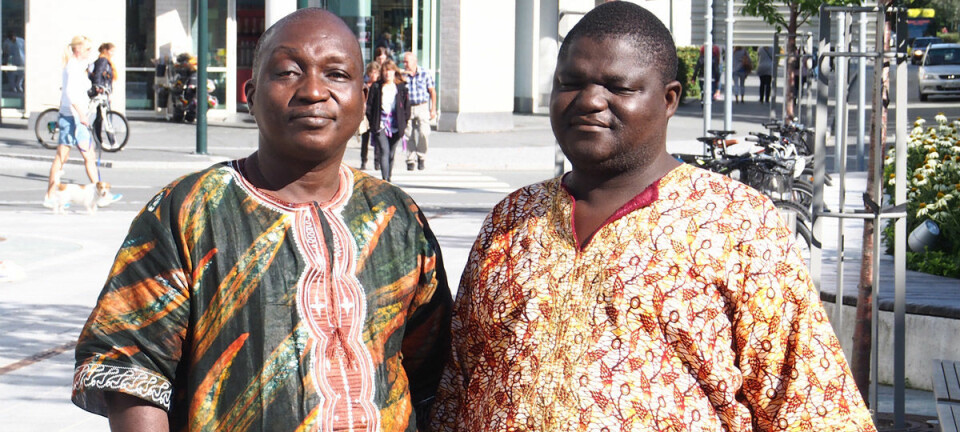
How does Denmark have better healthcare than the US for less money?
OPINION: Forget healthcare policy, it’s the culture.
As an American health care researcher visiting Denmark over the past two months I have spent the majority of my time trying to answer what seems like a simple question: How does Denmark spend less money than the USA, provide health insurance for everyone, and yet still have better health outcomes than the USA?
I already knew about the relatively high taxes in Denmark but that can’t be the reason since we know Denmark spends less money on healthcare as a percentage of GDP on a per capita basis than the US.
What I thought I would find is that Denmark perhaps has a unique set of policies and procedures for arranging doctors and specialists, or perhaps a certain distribution of hospitals and clinics, or that the patients would have a long wait, or a limited choice.
In other words, I thought the answer to my question (how do they do it?) would be found with a very technical, health policy oriented solution. Oh how I was wrong!
The healthcare system is not that complex, nor that unique. Its financing is fairly straightforward. Doctors are not highly paid compared to other occupations requiring similar education.
In terms of problems and challenges, from everything I have seen and learned they are very similar to the ones we face in the USA. For example, patients missing an appointment or not taking their medication are problems that all health care systems face. Conversely, Denmark does not have faster computers or better medical equipment or better doctors. It is something else.
Read More: Study ranks Nordic health care among best in the world, except Denmark and Greenland
It’s the culture stupid!
What I now realise is that it is the entire culture that makes this country able to provide such an effective and efficient health care system. Yes, it’s the culture stupid!
My problem was that connecting all the little dots was not easy at first. Imagine you are trying to put together a puzzle but you do not have a photograph of what you are trying to make. On the other hand, once you know what the finished puzzle should look like you can quickly find the edges of the puzzle and then begin to fill in the middle until voila! You have completed the puzzle!
The moment I realised that the health care system was something which fit into the bigger puzzle of Danish culture, finding the pieces and fitting them together became much easier.
Read More: World’s largest sex study under way in Denmark
Cycling keeps you healthy
One example of Danish culture and health are bicycles. Ok, so a lot people ride bikes in Denmark. But why? Denmark’s terrain is relatively flat which makes it a lot easier for many people of all ages to ride bikes than in say, the Swiss mountains. And crucially, the Danes build bicycle lanes, lots of bicycle lanes! They even have traffic lights just for the bicycles.
Riding a bike everyday helps keep you at a healthy weight. If you ride the bike to work every day, you don’t need a car. Fewer cars means fewer highways, fewer traffic accidents, and of course, less pollution. Fewer highways presumably means that more tax money available to build better public transportation. And better public transportation means it is easier for patients to get to the doctor.
A more dramatic example is what I recently experienced touring a large Danish city hospital. The director of the emergency ward was showing me around the facility, pointing out the various start-of-the-art equipment, when I asked “when was the last time you treated a gunshot wound?”
There was an awkward laughter at first, but eventually it was determined that it had been a few months ago. Suffice to say that the same question asked of any other emergency room in virtually any mid-size city in US and the answer would have been very different. Gun laws in the US are very different than in Denmark and the US constitution guarantees the right for Americans to own guns with very few restrictions. The gun culture is pervasive in the US and this no doubt gives rise to more violence and homicides. The chart below illustrates the dramatic difference in death rates from assault between the two countries.
Politics and healthcare are intertwined
Finally, the US political two party system creates one winner and one loser. The Danish multi-party system creates coalitions and consensus.
In this system, controversial issues are generally resolved through compromise. Compromise creates many winners and fewer losers. Larger coalitions tend to be longer lasting and programs are more faithfully executed since many more people wish to see a given program succeed.
My impression of Danish people, is that they do not necessarily think of life as a zero sum game whereby one must lose in order for another to gain. In the US on the other hand, it is commonplace to see Democrats and Republicans repeatedly describing each other’s plans in terms of “winning” or “losing.” Unlike Denmark, compromise in American politics is almost unheard of.
Read More: Try these citizen science projects and help health researchers
US healthcare needs more than a new law
Culture is pervasive and it is not one dimensional. Unfortunately for those of us in the US who think that fixing the American health care system is simply a matter of passing a new law, which would grant everyone health insurance, such a law would not change the American culture.
My working hypothesis is that if we wish to have a Danish style health care system in the United Sates we have to first re-orientate our culture.
A classic model to study cultures developed by the Dutch researcher Geert Hofstede suggests there are six main dimensions to culture: indulgence versus restraint; long term versus short term; masculinity versus femininity; tolerance of uncertainty; individuality; and power distance. A simple side by side comparison of the US to Denmark clearly shows how strikingly different the countries are in these attributes.
For example, Denmark scores higher on the dimension of long term orientation compared to the United States (35 vs. 26). This means people are more inclined to invest in the future, rather than live in the here and now. As an example, Danes support initiatives such as wind turbines, which may be more expensive in the short term, but over the long term will be better for the environment and future generations.
On the other hand, the United States scores much higher on the dimension of individualism compared to Denmark (91 vs. 74) meaning Americans tend to think about only taking care of themselves and their immediate family. Danes on the other hand have a much higher collective mentality making them very accepting of the need to take care of the broader community, especially vulnerable populations such as the sick and elderly.
I think to suggest that these differences don’t play a role in either country’s health care system, regardless of how you describe each one, either good or bad, is simply naïve.
Read More: New EU law puts patient health at risk
Lessons to be learned on both sides of the Atlantic
The United States and Denmark can both learn and benefit from each other. The nature of one’s culture is complex and ever changing. The nature of a health care system is just as complex and ever changing.
The Danish example of a culture and a healthcare system offer a model for those of us in the US to carefully study and attempt to better understand its nature, meaning, and impact.
Only through careful study and objective analysis of ourselves and of others can we truly find meaningful and lasting solutions to help ourselves and our fellow man.
---------------
Read this article in Danish at ForskerZonen, part of Videnskab.dk










